Saving one of New Brunswick's most endangered species: the Maritime ringlet

From mid-July to mid-August this summer, Billie Chiasson will be spending at least part of her day in a salt marsh on Peter's River, in the northern New Brunswick town of Beresford.
She's looking for one of Canada's most endangered species, a tiny brownish butterfly known as the Maritime ringlet.
"We go out when the tide is low, and when it's sunny and there's less wind," Chiasson said.
The surveyors, who are funded by the New Brunswick Wildlife Trust Fund, cover about 250 metres of the 900-metre-long marsh.
They go alone and stick to a transect area — a straight path through the marsh — mapped out on GPS to cause as little disturbance as possible to the marsh surroundings.
Salt marshes are dynamic and fragile environments, and it doesn't take much to do irreparable damage.
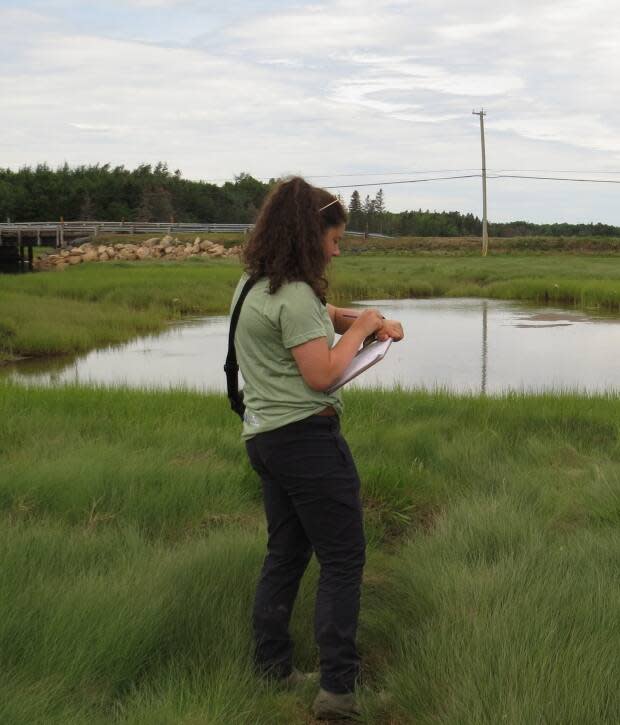
And that's something the Maritime ringlet doesn't need.
Listed as endangered in 2003, the butterflies live in a few marshes along Chaleur Bay, both here in New Brunswick and along the Gaspé in Quebec.
And that's it. You won't find them anywhere else in the world.
As far as we know, they inhabit just 10 marshes along the bay. Estimates in recent years have the annual adult population at between 55,000 to 65,000. In the insect world, that's a small number.
Why salt marshes?
It's a bit of a puzzle as to why the Maritime ringlet has evolved to live in salt marshes.
It's cousin, the common ringlet, lives up to its name and can be found across North America, including New Brunswick, and likes meadows and grasslands.
Moreau said Maritime ringlets don't leave their salt marsh habitat. They likely couldn't even if the urge hit them.
They are awkward fliers, only able to flutter from plant to plant a few seconds at a time.
Moreau describes their efforts as "a cute way of flying — they look like they are jumping."
It took human intervention to establish a new population.
In the 1990s, entomologist Reginald Webster transplanted eggs into salt marshes in Bas Caraquet and near the Village Historique Acadien. Those populations have thrived.
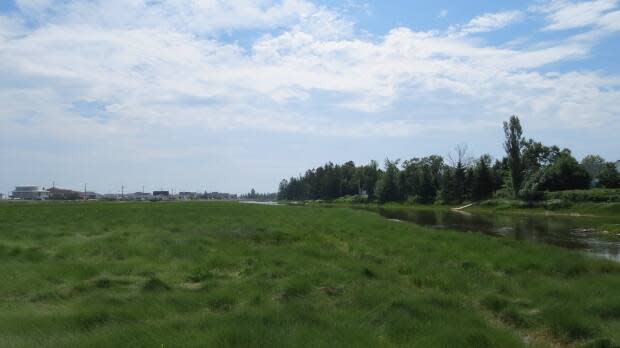
Not far from the Peter's River marsh, in Bathurst, Janet Doucet has spent every summer of the last 10 years counting ringlets too.
She just retired from her job as program co-ordinator with the Daly Point Nature Reserve.
She said about one-third of the 44-hectare reserve established by the City of Bathurst is salt marsh.
"We've been monitoring to try to establish a trend, any pattern of population dynamics," Doucet said.
So far, the only pattern they've noted is the population varies greatly from year to year.
But, Université de Moncton entomologist Gaetan Moreau said it's been a while since a full marsh-by-marsh survey has been done, so it's hard to say how the species is doing around Chaleur Bay.
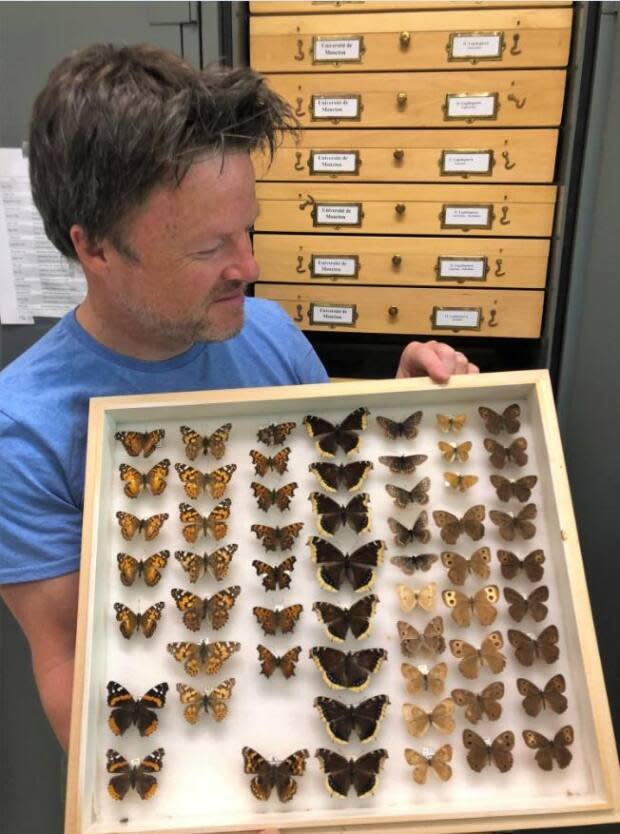
"The fact of having a species that is that limited in terms of habitat, really limited to 10 [marshes], but we're not even sure," Moreau said, "They might be gone [in some of those marshes]."
Chiasson has focused on the Peter's River marsh, and she's seen lots of change in numbers in recent years.
"We're noticing the numbers are quite variable. For example, in 2018 we had an average of 80 specimens on the transect," Chiasson said. "In 2019 and 2020, we had less than 20."
"That's a significant decrease."
A study looking at populations between 2011 and 2015 showed a decline too, but it's still hard to say if that decline is a trend.
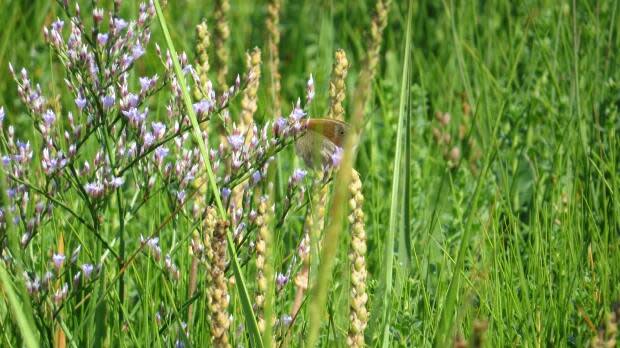
Maritime ringlets lay their eggs exclusively on salt meadow cordgrass, a common marshland vegetation, but adults are not too picky about the flowers they visit, although sea lavender seems to be a favourite.
They are very important pollinators in the marshes they call home.
Given those factors, any threat to the salt marsh is a threat to the Maritime ringlet, and vice versa.
And it seems most of the threats are man-made.
Doucet said it has taken a long time for people to realize the value of wetlands, especially along the coast.
Local problem, global solution
"Historically our forebearers looked at marshes as something to get rid of," she said, describing their propensity to use dikes to turn wetlands into farmland.
And, while salt marshes are now federally protected, we're still causing problems for them.
The marshlands near Caraquet, where it is difficult to limit human access, have been damaged by all-terrain vehicles in recent years.
It's easier to keep people from intruding into the Beresford marsh, but it has still seen a fair amount of human development nearby, mainly houses and roads.
But scientists think the biggest threat is climate change, and that means the Maritime ringlet will likely only survive if the world can solve the global problem of carbon emissions.
"On a local level, we're doing the best that we can," Doucet said about the efforts to help the butterfly.
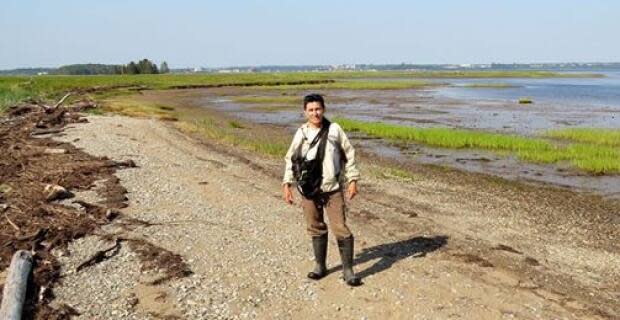
Protecting its habitat from sea level rise, coastal erosion and storm surges is an entirely different matter.
And the irony is that salt marshes actually play a big role in the carbon cycle.
"We have to tell the public that marshes capture a lot of carbon, more than the Acadian forest actually," Doucet said.
They also limit the effects of erosion and storm surge. The plant life helps to keep soil from being washed away, and the marshes act as natural flood control.
Scientists say the survival of the unassuming little brown butterfly is inextricably tied to our ability to solve the world's biggest environmental problem. Save the Maritime ringlet, save the world.
"We have to do everything we can to protect and keep them," Doucet said.

 Yahoo Finance
Yahoo Finance 